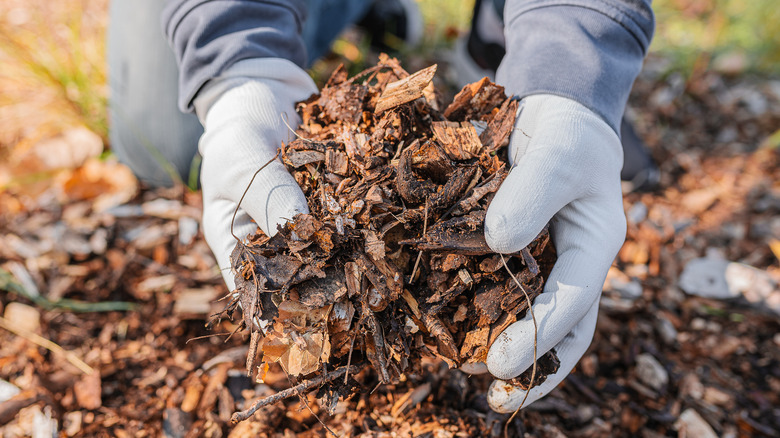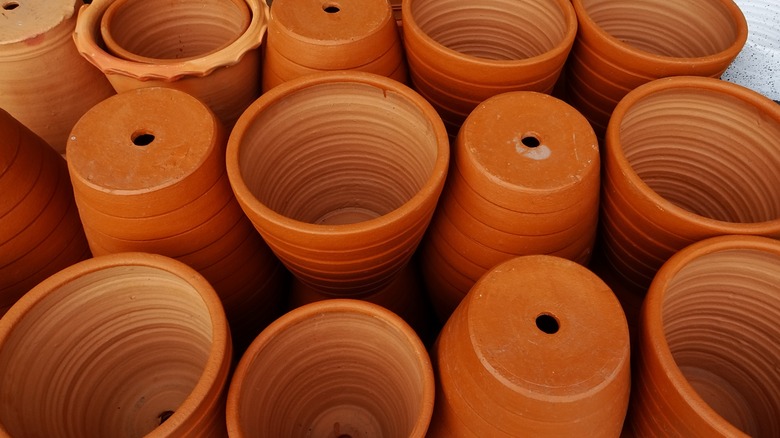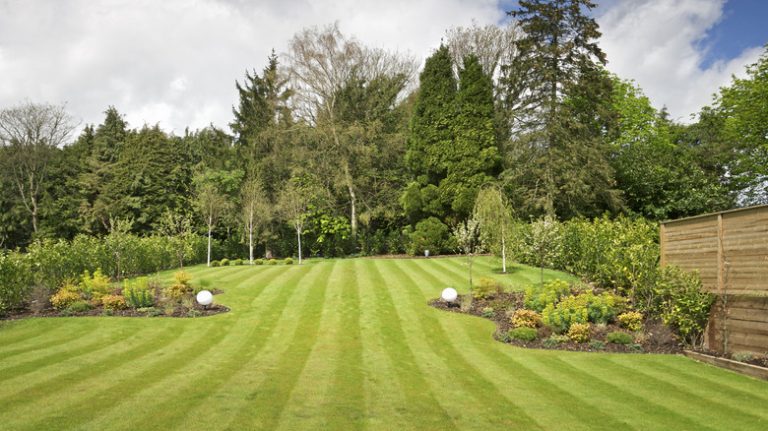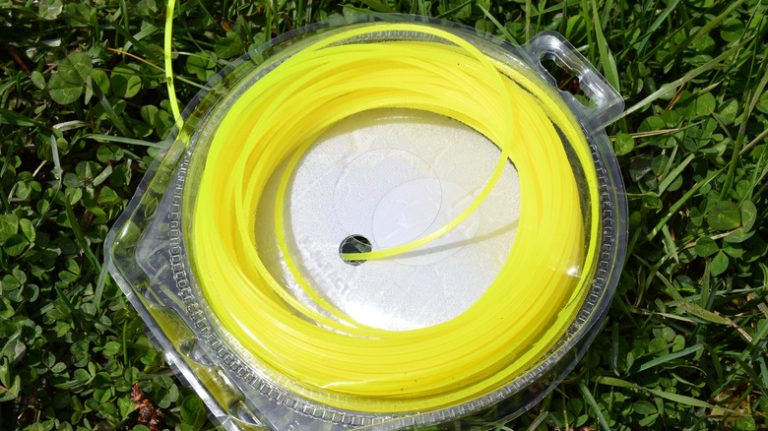There’s a reason mulch is a staple in gardening: Decomposing mulch treats your plants to organic nutrition while repelling weeds and providing moisture to your soil. But tossing mulch over an entire section of your yard isn’t always a precise operation, and it can be laborious to make sure you’re not burying any of your smaller plants in the process and stressful (for you and the plants) to have to dig any out after the fact. There’s an easy, stunningly simple way to save time while also keeping your garden protected from the deluge of mulch: Place an upside-down flower pot over each plant before you start (via TikTok).
Then, put all your mulch in another, bigger pot and use that to dump it around and in between each plant. This lets you get the mulch evenly distributed without having to aim around your precious flora. When you remove the protective pots, your plants will emerge completely unscathed, and you’ll have saved yourself time and effort keeping them that way.
Covering now means fewer headaches later
@revelllandscaping
Two mulching hacks you need to know: 1: use plant pots to cover the plants to avoid damge (this also creates a well around the plant to help capture water and seperate the plant from the mulch so it doesn’t rot) 2. Use bigger pots to transfer mulch into the garden bed evenly #howto #gardenhacks #landscaping #gardening
♬ Natural Emotions – Muspace Lofi
Using this method prevents big problems, like damage from falling mulch clumps, as well as smaller inconveniences, like your plants clinging to an unseemly coat of dirt and debris. The best part of this hack is that it might not cost you anything at all; as opposed to products on the market like rings or cages, you can just reuse the pots your plants came in.
Besides the convenience, there are many long-term reasons to create this barrier when mulching an area with plants. It creates a well around the base of each one, allowing water to run where it’s needed. It will also help you easily abide by a basic rule of thumb for mulching: you should always keep a healthy distance between the mulch and any plant stems. Because mulch traps moisture, it can cause rot and introduce disease in any plants it comes into contact with, and can even attract hungry pests like snails and slugs. Using a pot to keep the mulch evenly distributed will also help you avoid dreaded “volcanoes,” where mulch ends up piled up around the base of a tree or plant. Volcanoes come with a host of issues, choking your plants’ roots as they deprive them of oxygen and providing enough cover for voles to move in.
With mulch, less is more

Mulch can do amazing things for plants: Among other things, it can help keep the soil at a more constant temperature, and absorbing the falling rain means that diseases are less likely to spread due to raindrops splashing contaminated soil around. However, plants don’t do well when there’s mulch mixed directly into their soil. It can make the soil dry out, and decomposing mulch can deprive plants of the nitrogen they need to thrive.
Even if it’s not actively touching your plants, too much mulch anywhere near them can cause a range of complications. It can prevent air and water from being able to reach your plants’ roots underneath, impacting their ability to grow. At the same time, the water collecting in the top layer of mulch can encourage garden undesirables like fungi and mildew to pop up if the weather gets cold. So while you’re taking advantage of this time-saving hack that keeps your plants protected while helping you distribute the mulch evenly, just be sure you’re not piling it on. Around 3 inches is plenty.




